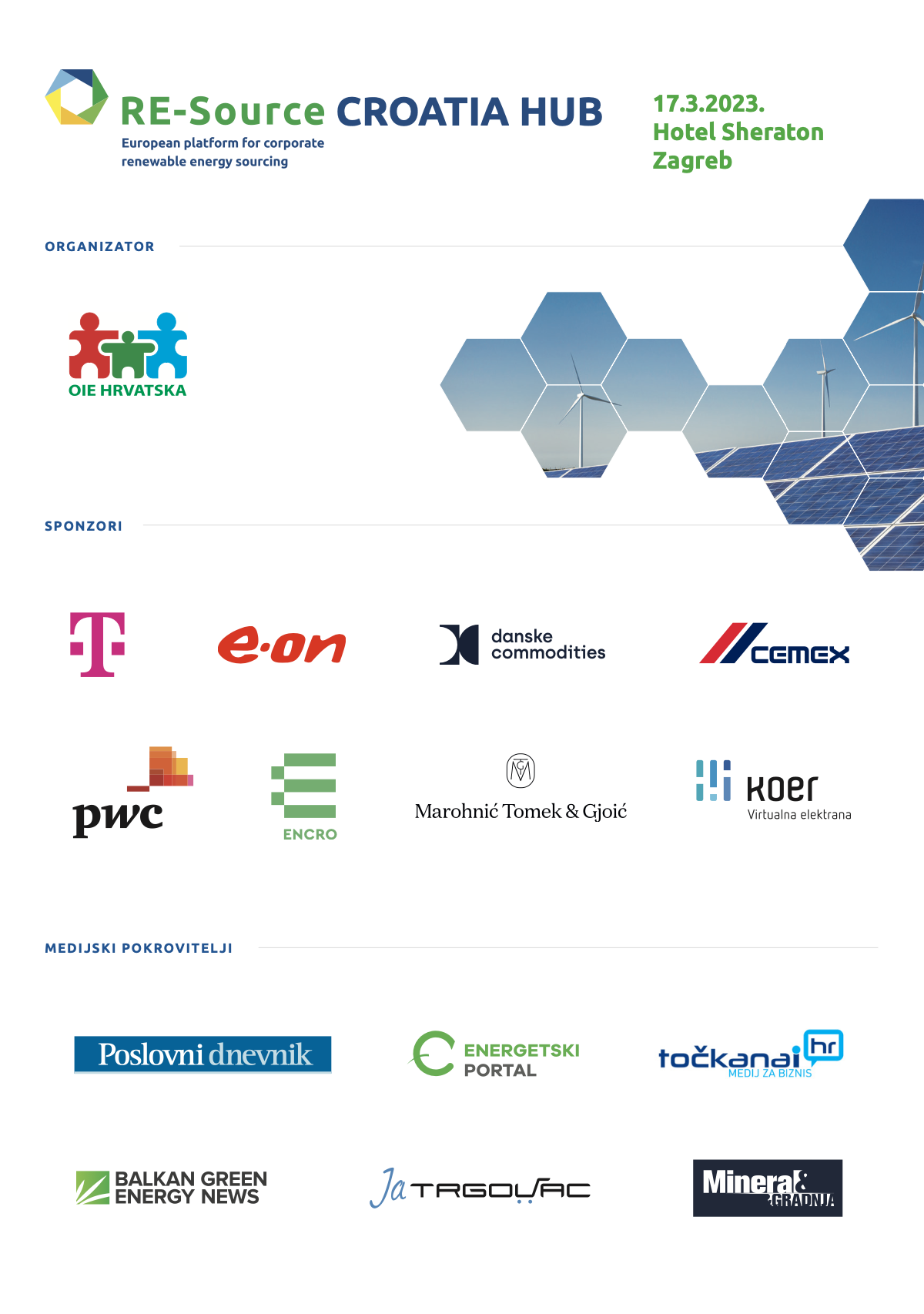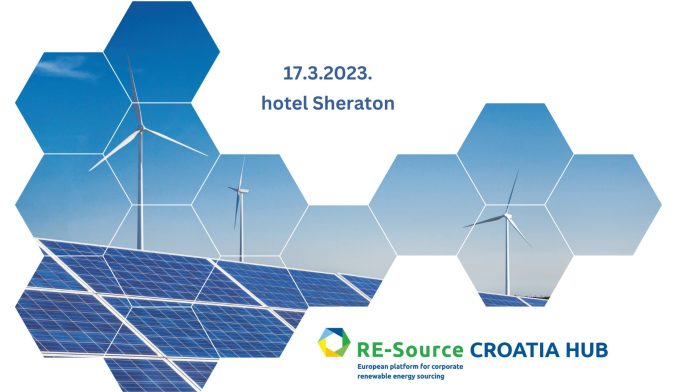Imagine if you could know the amount of your electricity bill for each month in the next twenty years and could be sure that the power comes from renewable sources producers. This is exactly what the PPA agreements provide (Power Purchase Agreements). In Croatia and others countries in the region, they are in their infant stages but the European Union gives them an exceptionally important place in the development of the energy market in Europe. Up to now, such agreements were mostly signed by corporations and large consumers of electric power which in that way ensured long-term security in energy supply and promoted the transition to 100% renewable energy. Because they needed large quantities of energy, the corporations signed such agreements with big producers, for example, large solar plants or wind farms.
Such purchases were not available to citizens, energy communities, and small and middle-sized firms. The European Commission plans to change that and in the recently proposed reform of electric power, the market emphasizes promoting the development of such agreements. The goal is to provide the positive effects of the secure purchase of green energy through PPAs to everyone in the European Union.
At the Re-Source Croatia Conference, the first in the region on PPAs, discussions will center on the availability of this type of energy purchase for everyone. Experts from Croatia will explain the importance of PPAs for the economy, citizens, and the development of RES projects. They will also report on their experiences in the conclusion of various types of PPAs.
How are PPAs connected with the development of RES projects?
A PPA (Power Purchase Agreement) is a buying-selling agreement between the buyer and the energy producer. An agreement can be concluded on the buying and selling of energy that is already being produced or that will be produced from renewable energy plants under construction. PPAs are usually signed for a period from 10 to 20 years.
The purchase of energy from the existing RES plants can be concluded through a PPA that had previously been under a state subvention agreement (feed-in tariffs) so in that way, a PPA can substitute an expired agreement.
More and more often buyers and producers of renewable energy are reaching agreements beforehand on the future construction of RES projects and thereby jointly approach financial institutions which on that basis agree to financially support the development of the project. Due to that PPAs become indispensable for the development of renewable energy sources so it is not surprising that the European Commission considers them to be essential for the development of the energy sector and energy self-sufficiency.
PPAs are exceptionally complex, and since they have been in existence for a long time in the corporate market, a large number of expert and rather insufficiently known terms are linked to them.
In cooperation with the Re-Source Platform, we are providing an overview of the most important PPA terms that are essential for an easier understanding of this complex topic.
Types of Power Purchase Agreements
According to some classifications, there are as many as 14 various models of procuring green energy. In the introductory presentation of the conference Re-Source Croatia, Stefano Miriello, public policy adviser of the European Re-Source Platform will speak on this subject. The two most important forms are the physical and virtual PPAa.
The Physical PPA/Sleeved PPA
A physical PPA, also known as a sleeved PPA is one in which the RES plants and the buyer are on the electric power grid. In a physical agreement, the power producer supplies electric power through a third party to the end buyer. As we are speaking here of the physical supply of energy, there is an additional cost due to the participation of the third party which is paid for the service of transferring the energy.
The Virtual or Financial PPA
The agreement does not apply to the physical supply of electric power but usually includes guarantees of origin. In this case electric power is supplied to the market in full and the buyer attains 100% of the energy from the producers according to the market price. However, if the market price is higher than the one contracted through a PPA, the difference is compensated to the buyer.
The Crossborder PPA
In its basis, a Crossborder PPA is mainly virtual in form, but due to various regulatory regions, it can be exceedingly complex. Nevertheless, owing to them it is possible to buy a sufficient amount of renewable energy from, for instance, neighboring countries.
On-site PPA
An on-site PPA is an agreement between the buyer and the electric power producer which implies the production and consumption of power in the same place. This type of PPA usually relates to small plants such as roof solar plants or else those on the tops of parking lots. In this case, the produced electric power provides energy for the facility on which the solar panels are installed.
Off-site PPA
An off-sire PPA is an agreement between the electric power producer and buyer when the electric power is produced at a location that is not near the buyer. This type of PPA is habitual with large-scale RES projects and implies that the buyer gets the produced energy via a transmission grid.
PPA structure
The producer and buyer sign an agreement that defines how much of the produced energy and at what price will be bought, namely sold. That energy, following the stipulations from the agreement, should be supplied in an agreed period. This is how some of the most important PPA structures were created.
Baseload PPA
A baseload PPA implies the supply of a fixed amount of electric power during a specific period. Since the production of renewable sources is variable, the risk lies here on the part of the producer because it has to supply the agreed-upon amount of energy. If the production is insufficient and it cannot fulfill its obligations through its plants, the agreed-upon amount is purchased on the market.
Pay-as-produced (PAP)
This is the most frequent PPA structure. In that structure, the buyer buys any amount of produced electric power from RES plants at any time.
Pay-as-forecasted
This type of energy supply implies that the buyer attains the amount of energy “forecasted” by the previous day’s calculation, namely, the buyer knows the amount of energy production “forecasted” a day ahead.
Other important PPA terms
Origin guarantees are exceptionally important for the purchase of green energy as well as the difference agreements. Both are component parts of the PPA terminology.
Offtaker
The buyer of renewable energy in PPAs.
GoO or GO – Origin guarantees
The origin guarantee is an instrument defined in European legislation and serves as a mark of electric power from renewable sources. Its purpose is to provide buyers of electric power information on its source. In many cases, the origin guarantee is used as an instrument of ownership for the transmission of “green benefits” from the production of electric power from renewable sources from the seller to the buyer.
Contracts for Difference (CfD)
In a CfD the two parties agree on the trading of financial instruments. In the world of renewable energy sources, electric power is such a financial instrument. CfD mechanisms are broadly used as mechanisms of government incentive, where RES projects participate in an auction and present price offers. Within the CfD mechanism, the RES project sells its energy in the wholesale spot market. Depending on the movement of spot prices, there are exchanges of money flows between the producers and the other side which is usually a state subject. If the amount of market, namely, the reference price at which the producer sells its energy is above the agreed-upon price, the producer will return the difference. If the reference price is lower than the executive price, the buyer will return the difference.
The above represents a clarification of the basic terms linked to PPAs and will serve you well in following the conference proceedings. The interest is great and more than 300 participants are confirmation of the importance of this event for getting informed and educated on the purchase of energy directly from renewable energy source producers.











